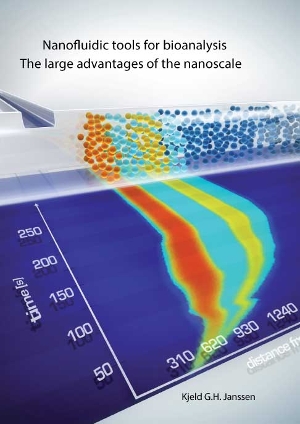Dissertation
Nanofluidic tools for bioanalysis: the large advantages of the nano-scale
Promotor: Prof.dr. T. Hankemeier, Prof.dr. J.C.T. Eijkel (Twente University)
- Author
- K.G.H. Janssen
- Date
- 19 December 2013
- Links
- Thesis in Leiden Repository

In this thesis, nanochannels as well as nanofluidic phenomena are used to provide new and miniaturized bioanalytical tools for the life sciences. Isotachophoresis performed in nanochannels showed the focusing and separation of analytes in a 0.4 picoliter volume, which is a volume in the order of a sample from a single cell. Depletion zone isotachophoresis (dzITP) is demonstrated which uses a nanofluidic phenomenon, concentration polarization, to enable isotachophoresis in a microchannel while using only a single electrolyte. A concept for surface enhanced Raman spectroscopy (SERS) sensor (SERSOR) is explored; a coating protecting the SERS surface from irreversible adsorption may enable dynamic measurements of biomolecules in solution in minute volumes. Working with nanochannels has led to the discovery of new unexpected fundamental phenomena: the very high surface to volume ratio in nanochannels causes acidification of solutions introduced in them, despite the presence of up to 1 mol/L of buffer. Also, extreme pressures of more than a 1000 bar may be induced in a nanochannel by what we named electrocavitation, an effects shown to impose a limit on further downscaling of ITP.
